#folklorist
Text
Tumblr Grimoire
Here is a comprehensive collection of all of the posts I've done on the occult and the spells I've done and spell resources. This will be added to over the life of the blog as well this way everyone won't have to dig for everything. And you get to learn a bit more about my practice.
Occult & Folklore Lessons
History Of Solomonic Practices
Ars Goetia 72 demons Kings
Ars Goetia 72 Demons Dukes Pt. 1
Petitioning Deities From Around The Globe
Ancient Art of Osteomancy
Curses: A History On The Dark Arts and How to Practice Them
The Enochian Language
Scrying, A History, and Guide
CELTIC FOLKLORE&MYTHOLOGY 101
Realm of Celtic Faeries
Protection From Malignant Spirits
Appalachian Folk Practices 101
Incantation Bowls
Spells and Rituals
Exorcism
Exorcism Charms
Exorcism Powder
Boundary Powder
Everlight Candles
Solarian Oil
Vincula Luna
Igni Bowls
Basic Banishment
Binding A Spirit To An Object
Malignant Spirit Binding Totem
Pseudo Moon Water
Medicinal Herbs & Remedies
Tincture For Sleep
Salve For Minor Injuries
Grimoire Reading List
this is added to periodically it's free pdfs you can download
Informational Joke Posts/Answered Asks
Greek Sacrifice Traditions
Is Mana Real?
Sonneillon The Demon Of Hate
Demonolatry for Lesser Known Demons
Do you have to be born with magic, or can anyone learn it?
Navigating the Divide Between Legitimate Academic Study and Occult Fiction
Can magic heal physical injuries or illnesses, or is that just stuff they show in movies?
Services Offered By WanderingSorcerer
Get Early Access To All Of My Work On Magick and The Occult
Spellwork and Tarot Reading Prices Listed Here
One On One Occult Lessons With WanderingSorcerer
☕If You Love My Blog Consider Buying Me A Ko-Fi☕ 😊

#occult#occultism#occultist#demons#ars goetia#solomonic magick#magick#witchcraft#folklore#folklorist#magi#magus#grimoire#grimoires#witch#witchblr#witches#witchythings#witchlife#pagan witch#WanderingSorcerer#herbalist#plants and herbs#herbology#herbalism
2K notes
·
View notes
Text
Misunderstanding Lucifer from the Sandman series and why Gwendoline Christie is the right choice (an art historian and occultist's opinion)
I am writing this post as I'm absolutely baffled by the issues people seem to have with the portrayal of the character of Lucifer in the Sandman series. For some reason people find it problematic that the fallen angel is played by Gwendoline Christie, a powerful and androgynous-looking woman, but there is seemingly no problem with Lucifer being played by a black-haired man in the nightclub business (Tom Ellis in the Netflix series 'Lucifer'). Don't get me wrong, Tom Ellis is entertaining and wonderful to watch, but that particular version of Lucifer is neither canon when it comes to the comics nor does it have anything to do with the actual angel Lucifer.
Angels are genderless beings and they have always been portrayed as androgynous in the history of art. Multiple literary sources, including grimoires (books with supposed instructions on how to summon these beings and many others), state that angelic beings as well as demons are able to change their appearance. Many of those forms they might take aren't even humanoid and they can choose not to show any physical form at all. They aren't corporeal beings, the fact that they do take on any resemblance of a physical form is just so humans can understand them better. That's why we've been painting them as human-like ever since the early times of human civilization. What we make to be similar to us is what makes it comprehensible. Portraying beings from other dimensions/realms as human-like but with androgynous features is a way to show they don't belong in the physical dimension, as gender is likely a non-existent concept in other realms of existence. Androgyny of mythical beings, therefore, emphasizes the fact they are different than physical beings such as humans.
Therefore, when portraying an angelic being in art, or in any type of media, making them androgynous is making way for their essence to come through. In a way, the same applies to the way elves are portrayed as ethereal and androgynous since they don't have to be corporeal beings at all, at least when it comes to folklore. I know this opinion might not be understandable to others or it might sound controversial, but I believe that not portraying an angelic being as androgynous and not showing any signs of their divine origin (these include mannerisms that emphasize their etheriality for example, a cadence in their voice that is different etc.) is a huge missed opportunity that might rob these interesting mythical beings of what they are. Not making angels feel like angels beats the point of having an angel character (in a movie, series or video game for example) in the first place.
This is why Gwendoline Christie is the right choice. At a height of 6′ 3″ (1.91 m), captivatingly pale. androgynous with a powerful specific sort of grace and presence - a perfect 'vessel' for the Morning Star. What's more, she understands the importance, complexity, grandeur and the mythical dimension of the figure of Lucifer, as well as the whole 'spirituality' of the Sandman universe which is rather evident from her approach to this role and the interviews she has given so far. I might go so far to say that, even though the Sandman series isn't even out yet (though there is some footage available already), the casting of Gwendoline as Lucifer feels right just as the casting of Lee Pace as Thranduil in the Hobbit felt right and I consider the character of Thranduil to be the best portrayal of a humanoid mythical being on TV. Lee felt like an elven king, moved like an elven king, spoke like an elven king and radiated an energy of the dimension the elven king might have come from (I'm talking about the folkloric 'Otherworld' where elves supposedly live). I feel the same might apply to Gwendoline and Lucifer.
As an occultist, art historian, anthropologist and someone who is rather fond of the figure of Lucifer, I am looking forward to seeing how Gwendoline interprets him. Finally, we might get something completely different from a frequently portrayed 'demonic' side/version of this important mythical character. We might just see the Light Bringer who has not forgotten his divine origin.
- Heidi (@theatrum-tenebrarum)




Gwendoline Christie as Lucifer (The Sandman series on Netflix, out 5th August 2022)
#lucifer#lucifer morningstar#thesandman#sandman#mythology#arthistory#angels in art#characters#neil gaiman#gwendoline christie#comics#thranduil#elves#folklorist#luciferian#occult#occultism#witch#magick#esoteric#myths#myth#folklore#rant#gender#netflix#netflix series#anthropology#androgyny#theoccultinpopularmedia
6K notes
·
View notes
Text

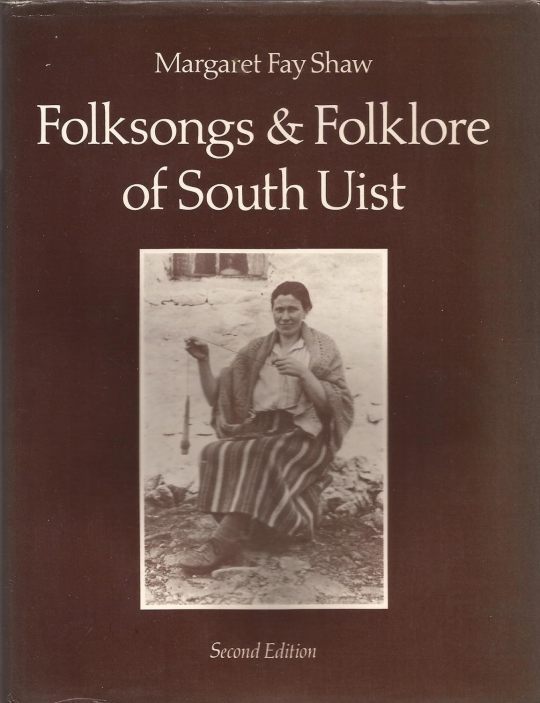


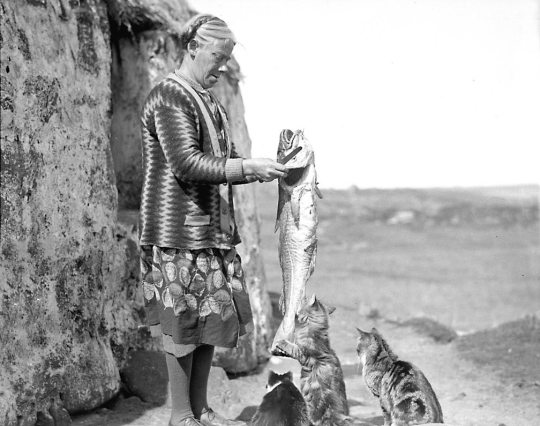


November 9th 1903 saw the birth near Pittsburgh of Margaret Fay Shaw, the American writer who did much to record the music and culture of South Uist.
Margaret Fay Shaw was one of the most notable collectors of authentic Scottish Gaelic song and traditions in the 20th century. The arrival of this young American on the island of South Uist in 1929 was the start of a deep and highly productive love affair with the language and traditions of the Gaels.
Shaw was also an outstanding photographer, and both her still pictures and cinematography contributed to an invaluable archive of island life in the 1930s. She met the folklorist John Lorne Campbell on South Uist in 1934; they married a year later and together helped to rescue vast quantities of oral tradition from oblivion.
She came of Scottish Presbyterian and liberal New England stock. The family owned a steel foundry in Pittsburgh and her parents were cultured people. Margaret was the youngest of five sisters and her early years were idyllic. Her first love was for the piano and she continued to play throughout her life.
By the age of 11, however, she was orphaned and obliged to develop the independence of character which was to lead her into a life's work far removed from her upbringing. At the age of 16, she made her first visit to Scotland at the invitation of a family friend and spent a year at school in Helensburgh, outside Glasgow, where she first heard Gaelic song.
Wanting to hear it in its "pristine" state, in 1924 she crossed the Atlantic again, this time engaging in an epic bicycle journey, which started in Oxford and ended at the Isle of Skye, where she remained for a month. It was during this trip that she began to use photography to earn a living, selling prints to newspapers, and magazines such as the Listener.
But it was not until she arrived on South Uist that she found her spiritual home. She was invited to the "big house" in Lochboisdale for dinner, and two sisters who worked there, Mairi and Peigi Macrae, were brought in to sing for the company. Margaret had never heard singing like it. For the next six years, she became their lodger and dear friend. They shared with her all of their immense stock of oral tradition which she faithfully transcribed, learning Gaelic as the work proceeded.
Her most important published work was Folksongs And Folklore Of South Uist, which has never been out of print since it was first published in full by Routledge and Kegan Paul in 1955. Not only was it a scholarly presentation of the songs and lore which she had written down during her sojourn on the island, but also an invaluable description of life in a small crofting community during the 1930s.
This classic work was undoubtedly the centrepiece of Shaw's career, though she also wrote several other books, including an autobiography, From The Alleghenies To The Hebrides.
On the neighbouring island of Barra in the early 1930s, an extraordinary social set - a kind of Bloomsbury in the Hebrides - had developed around the presence of Compton Mackenzie. One of his closest collaborators was John Lorne Campbell, who came from landed Argyllshire stock and had developed his interest in Gaelic at Oxford.
The two patricians set about producing The Book Of Barra, a collection of the island's history and traditions, to raise funds for an organisation called The Sea League, which they had established to campaign for the exclusion of trawlers from Hebridean waters.
Hearing great reports of an American woman's photography on South Uist, Campbell crossed over by ferry to seek her involvement in illustrating The Book Of Barra. He walked into the Lochboisdale Hotel one rainy evening in 1934 and found Shaw sitting at the piano; a suitably romantic initiation to a relationship which was to last for more than half a century. They married the following year and made their home on Barra until, in 1938, Campbell bought the island of Canna, where they lived for the rest of their scholarly lives. The island was given to the National Trust for Scotland in 1981, and John Lorne Campbell died in 1996.
There was nothing dry or academic, however, about Shaw. She travelled regularly to America until her late 90s. The fearsome ferry journey between Mallaig and Canna was regularly undertaken with equanimity, and she fortified herself to the end with the finest Kentucky bourbon. Her love of the Hebrides was, above all, for the values and lifestyle of the crofting people, and, particularly in South Uist in that 1930s heyday, it was deeply reciprocated. It is there that she will be laid to rest.
During her latter years she stayed at Canna House until her death at the grand old age of 101 in 2004.
96 notes
·
View notes
Text

Living my best slavic winter fairytale fantasy. Wearing traditional ukrainian shawl and belt. Skirt is by Son de Flor and blouse from Pavietra.
#winter wonderland#cottagecore aesthetic#folkcore#dark cottagecore#folklore#dark aesthetic#traditional costume#ukrainian folklore#slavic#slavic folklore#fairytale#snow magic#folk goth#folklorist
328 notes
·
View notes
Text
#OTD in 1852 – Lady Isabella Augusta Gregory (née Persse), playwright, folklorist and co-founder of the Abbey Theatre, is born in Roxborough, Co Galway.
Lady Gregory was a dramatist, folklorist and theatre director; also a co-founder of the Abbey Theatre.
George Bernard Shaw once described Lady Augusta Gregory as ‘the greatest living Irishwoman’.
Lady Gregory, also known as Isabella Augusta, was born in Roxborough, Co Galway. She married Sir William Henry Gregory in 1880. Sir Gregory owned an estate at Coole Park near Gort in Co Galway. The house…
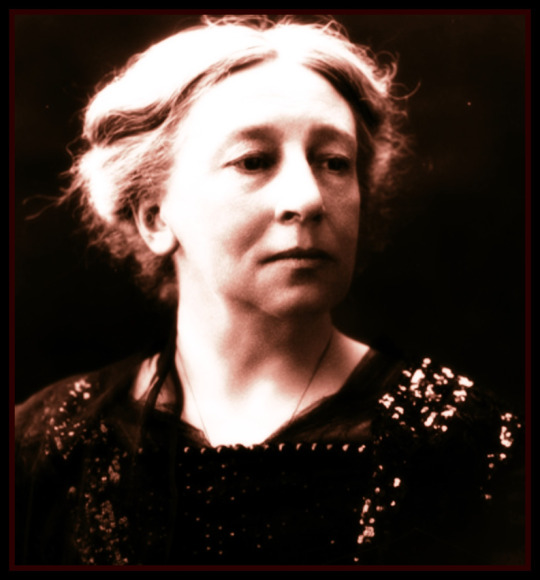
View On WordPress
#Co-founder Abbey Theatre#Co. Galway#Coole Park#folklorist#George Bernard Shaw#Gort#J.M. Synge#Lady Isabella Augusta Gregory (née Persse#playwright#Roxborough#William Butler Yeats
7 notes
·
View notes
Text
Pierre Dubois: An introduction
Have you heard of Pierre Dubois?
If you live in a French-speaking country and have interests in fantasy, you probably have. Else, you might have never heard of the guy.
I discovered Pierre Dubois, like many other people, through a trio of big encyclopedias with bizarre, beautiful and disturbing illustrations - each one centered around a different “type” of supernatural being. The Great Encyclopedia of Lutins (Imps/Dwarfs), The Great Encyclopedia of Fées (Fairies), and the Great Encyclopedia of Elves. This trio of encyclopedias, the product of “twenty years of research”, and released in the 1990s, became a MASSIVE hit present in every library and every bookstore across France. And I will speak of them in relation to fairytales - but we need to talk about the man himself.

Who is “Pierre Dubois”? He is the first and most prominent “elficologist” of France (in French, “elficologue”). This word, which designates the study of elves, was originally a joke-word invented by Dubois during an interview about what he did in life - but it soon became a term everyone used to describe him, as a result he also used it himself, and soon it became official. The “elficologie” (elficology) became the word used to designate all those that studied elves and fairies, the study of what Dubois himself called “Faerie”.
Pierre Dubois is a story-teller, a writer and a scholar who was always fascinated by fairies, folklore and fairy tales. Before the enormous success of his Encyclopedias, Pierre Dubois was mostly known for his work on both radio and television shows: since he was a collector of legends and folklore from every corner of France (and later every corner of Europe), he put it to good use and brought all the legends and folktales he kept finding to the radio or the television - these radio shows of his went on for nearly thirty years. He also started to do some BD (bande-dessinée, the French equivalent of comic books) work but it wasn’t that successful (his BDs really boomed after the Encyclopedias however).
With his work and Encyclopedias he really created a true “fairy craze” as he woke up back a passion for all the bizarre creatures and unusual monsters of folklore, and ever since all of his books have been hits - because he wrote many more books and encyclopedias, about trolls, about the folklore of the months, about ghosts... He is even called “the Levi-Strauss of the fabulous”. Pierre Dubois himself is a very excentric and bizarre man with unusual habits. He likes to write by hand, refusing to use computers or even typewriters. His first true reads, during his teenage years (as his father during his childhood disliked seeing him reading and wanted him to focus on more “useful” things) shaped strongly his view of the world: Jean Ray and Sherlock Holmes. As a kid he collected pirate stories, the Grimm fairy tales and the Bob Morane novels , and while he did read some comic books (like Giffey’s Buffalo Bill) he had to do it in secret due to comics ot being allowed in his family. He had a brief carreer as an illustrator before starting to write - and he was an illustrator for the American magazines “Eerie�� and “Creepy”. His first attempt at having a book publish was quite unique as, at fiftee years old, he sent his first book to an editor written with a goose feather on parchment and bounded by leather ; and when he got refused, he sent the manuscript again... WITH ILLUMINATIONS AND BOOKMARKS MADE OF HERBS. During the ten years he spent collecting legends and fairy tales in remote corners of France and countryside areas where witches and medecine-men were still a thing, he took the habit of going around dressed all in black, with a cloak, wearing his hair long, and with his pet raven on his shoulder (pet’s name was Nao by the way) - which actually did intrigue and fascinate people so much it eased a lot his collecting work. Oh yes, and his personal answer to who was Jack the Ripper is that it was Peter Pan - an idea he allowed Régis Loisel to use in his own BD about Peter Pan.
And to such a strange and unusual man, corresponds a strange and unusual writing style. Pierre Dubois has strong likes and dislikes. He admires Jean Ray that he hails as one of the best writers of all times ; but he actually dislikes Tolkien and prefers to him Lord Dunsany. Despite his huge “fae” work, he actually doesn’t like much fantasy, but is a die hard fan of magic realism. His biggest influences are Bram Stoker, Charlotte Brontë, Mary Webb, Lewis Carroll, Walter Scott and Robert Stevenson. Similarly, his tastes of illustrations draw him towards Arthur Rackham, Richard Doyle and Gustave Doré. As for his writing methods, Dubois in his own words can spend “one hour on one sentence”, and he compares his writing to an “alchemy”, as he tries to create sentences so that they would resonate like “magical incantations” or “beautiful music”. When he writes, he always places himself in a specific ambiance - he surrounds himself with photographs, pictures, objects or natural elements tied to the subject he is writing around, all the while listening to “repetitive” music to place himself almost in a trance (such as Gavin Bryars’ music).
And he became so famous and important he participates to a lot of folkloric festivals, literary salons, he does public story-telling to children in French castles (children usually like him due to his unusual appearance, as he is a big fat bearded guy with wild hair, he is often compared to “an ogre”, “a giant” or “Hagrid” by kids, while Dubois describes himself as a mix between Captain Hook and Peter Pan) ; and he notably is the chancelor of the “Center of the Arthurian Imagination”, a big cultural association/center of the Bretagne area dedicated to keeping alive the Arthurian legends of France.

Anyway that’s all for the public image. But to speak of my more personal and prosaic experience with this man, I’ll speak of his Encyclopedias, the peak of his fame.
How did Dubois create those encyclopedias? He compiled everything he could find. His own personal collection of folktales and fairy tales, but also a HUGE compilation of various books from different languages and eras (many of them I could’t find back, either because they are THAT RARE, either because they don’t exist anymore - or maybe even never existed) ; and by everything I mean everything. Fairy tales, folktales, folklore, legends of various kinds, from every country of Europe and even from countries and cultures outside of Europe (Asia, America, Australia, Africa...). He also included folk rites, superstitions, actual historical facts and anecdotes, ghost stories, local beliefs, mythologies, pagan religions, monotheistic and “modern” religions, “folk-Christianity” as it developed itself in France though saint cults and unusual tales about angels, demons or the Virgin Mary...
And this is both one of the greatness and weakness of his Encyclopedia. It is great because by reading them you’ll have a HUGE side of the world’s culture in your brain and you’ll learn TONS of useful things and get tons of references. But on the bad side, he mixes gleefully witches, fairies, gods, ghosts from very different countries and eras in one big mix-mash without clearly defining the differences between them, and blurring the lines between everyone and everything. This is because Dubois has a very unusual way of presenting his research and descriptions: he doesn’t work in a “scientific” approach, he works with a “writer” approach. His texts are always very flowery, very poetic, using all sorts of words from the local term untranslated to old-fashioned names not used anymore, and when he can tell something through a story or an anecdote rather than a blank description or explanation, he will do it. The result is a fascinating reading experience that can conjure up visuals and ambiances like you can’t have anywhere else... but from personal experience, DO NOT TRY READING IT OUT LOUD! While it can be pleasing to read on your own, you really need to get the hang of his unusual phrasing and rythm, and I can tell you that trying to read his books to someone will turn the text into a boring and uncomprehensible mess because while the sonorities will be good in your head, you’ll need an extensive training to make them go out of your mouth in a pleasant way.
And while it is always a pleasure to have a Dubois book in your home because it is a poetic mine of info and stories, you will never actually see a Dubois book being used for any kind of serious folkloric research. Why? Because Dubois, as a true storyteller, likes to flesh out his characters, to invent new angles to explore legendary figures, to twist the traditional fairy tales. And so he will often for example theorize about what led to a monster being what it is, or what happened to a fairy after a given story. He will often add little trivial details in order to create a full “lifestyle” or “culture” of the species he describes. He uses humor or irony to describe the “fae folk” and so you can rarely read him in first-degree. And in his all-encompasing, all-including view of the “legendary” world he will materialize existing relationships between folktales OR invent them to give more “coherence” to his new Fae world. It isn’t uncommon for him to include in his stories other entities he describes in other articles as a background or side detail, thus creating a “fairy history” with its own chronology and an “elven genealogy” with its own magical evolution - these things never actually explicitely spelled out or described, but that the reader has to recreate by collecting the clues scattered throughout his books.
Because that’s what he does. A lot of re-creation, a lot of re-invention. At least he does that in these Encyclopedias. The result is an insanely fun read filled with discoveries of little-known folklore and a re-discovery of a entire world of the supernatural and a new “world-mythology”... But his claims need to constantly be checked and countered by more serious works if you want to do actual folkloric or historical research. Dubois is clearly a writer and a story-teller first and foremost. I do appreciate the enormous bibliographies he gives in each of his book, but I would love to see one day all the material he collected during his ten years-trip to France (I haven’t found it published anywhere however).
For me, I appreciate his Encyclopedias as an object of art, as a fantasy work and as a discovery/rediscovery of the “fae folklore”. I will never tell anyone to not look at them (especially since the illustrations are WILD). But I noticed that people tended to take his words in a way a bit too literal, repeating some things that are clearly Dubois’ inventions as if they were cultural facts, and so there should be a warning label when it comes to these VERY famous books.

And to end this introduction post, I’ll list there for the sake of the trivia some of the opinions and points of view Dubois defends.
# He is a great lover and defender of fairy tales, but he has a truly “folkloric” approach to them: he defends the idea that fairy tales are a product of popular culture, and that it existed since the dawn of humanity, its characters being inherited from the original goddesses and sorceresses of humanity. He interprets fairy tales as being allegorical stories about the cycles of seasons and the phenomenon of nature, with a cathartic function (such as providing hope and comfort during winter). He considers these tales and legends as being an encouragement to respect nature, and the result of a collective memory that is passed down from generation to generation, alongside the figure of witches that are for him the embodiment of all “our fears and anxieties”. He also explains how fairy tales are initiation tales that warn children of the dangers of the ogres and dragons, and encourages them to become allies and friends of the spirits of nature - though still keeping fairies as ambivalent entities.
# Pierre Dubois is very happy with the recent passion and success of the “faerie” genres and the “literature of the imagination”, he does believe that the fame of things such as The Hobbit, Harry Potter and role-playing games allows people to find back “the sense of the marvelous, of the epic, of the knighthood and the fairy tale”. However he does express one big regret, that “special effects replace magic and make the fantastical and spiritual disappear” from those stories ; he also likes to remind people that “fairies don’t like when we speak about them” and fears that there could be an over-abundance of fairy-related books and a “commercialization of the fairy”.
# He is a strong ecologist, though he isn’t so much concerned about stuff like climate change but rather believes how you need to listen and respect nature because only contact with nature can “wake up imagination” - he also likes to remind people how in legends fairies warn humans not to cut some trees or build on some lands before taking revenge on those not listening to them through natural disasters - as a result his motto is “If you hurt nature, it will hurt you in return” and he belives that some of the huge floods France knew in his lifetime were “fairy punishments”.
# He keeps preaching the virtues and powers of the imagination, especially towards children: he believes they should be soaked in drawings, theaters and songs to wake up their imagination, and he dislikes how for a long time in France all those activities were stopped around six or seven years old, the “age of reason”, due to them becoming “useless”. He insists that adults should never deny the emotional or imaginary sides of life, and he also strongly dislikes any kind of children literature that is “educative and realist”.
# Finally, Pierre Dubois strongly dislikes today’s society and the modern world due to denouncing the over-abundance of “scientism” and “materialism” in the ruling classes, and how modern culture relies on greed and selfishness. He claims that the “waking up” of the imagination and the “revival” of the Faerie was in France a natural extension of the May 68 revolt (I’ll let you search for that on your own), and he has a great interest and kinship with two type of sub-cultures: the gothics, and the punks, due to him sharing with them the idea of an unconventional freedom. Dubois defends the idea that the fairies are the symbol of the “rebelled ones” and of the “wild ones who say no to an established order” ; and he also strongly dislikes how editors like to divide literature into categories and sub-categories. This all results in his strong criticism of television (that “prevents” a natural transmission of countryside and local culture, and “replaces” the stories of the old folks) and of school+monotheistic religions (that for him work to make “all the small gods of nature” disappear). In fact, his wish would be that school taught less civic classes and more philosophy classes and fairy tales - and while he does preach a return to the ancient “rites of passage”, he also says in our modern day we shouldn’t fall into the same excesses as in the past concerning those rites.
#pierre dubois#french culture#fairies#fae#faerie#folklore#folklorist#encyclopedias#fairy tales#fairytales
92 notes
·
View notes
Text


yule supplies and later, an altar
#yule#yuletide#winter#winter solstice#witchy#witch#folk witchcraft#hearth witch#witchblr#cottagecore#folklorist#southern gothic#appalachian witch#appalachian gothic#cozy#herbalism#folk magic#tarot#death witch
96 notes
·
View notes
Text
Folklorist (Pathfinder Second Edition Archetype)
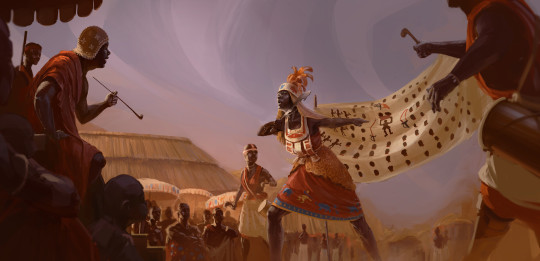
(art by Victor Rossi on Artstation)
There is something integral to the human experience in storytelling. The art of creating stories to entertain, teach, and bond over is something we’ve been doing ever since we developed sapience, and we’ll continue telling stories until we finally come to an end.
That love of storytelling is why we play RPGs, and games in general. After all, a ttRPG is by nature a collaborative storytelling experience.
It only makes sense then that there would be an archetype tied to that sacred role. And while this archetype shares bones with the bard class conceptually, both can exist on their own and together as well.
While such storytellers could easily show up anywhere, this archetype is heavily associated with the Mwangi Expanse, where the art of oral storytelling is a respected profession. Indeed, such is their gift for storytelling that they can use tales to help guide the actions of others, firmly believing that just as the real world shapes stories, so too do stories shape reality.
As part of the dedication for this archetype, these tale-weavers can spin a tale that is either about an ally or is relevant to their predicament, surrounding them with minor inspiring illusions that bolster their ability to fight a single enemy.
Before libraries or schools, stories were also the primary way to educate others, though oral tradition runs the risk of misinformation as tales or forgotten or unique circumstances that inspired a tale render it’s lesson inapplicable. As such, these storytellers learn a lot about various stories which can help them recall knowledge on almost any topic, but runs the risk of dubious information.
Just as a storyteller conveys a tale, skilled ones can convey magic, letting allied spellcasters channel their magic through them, which can be useful when cover or range is involved.
Many storytellers agree that three is an auspicious number, and the hero of a story often achieves their goal on the third attempt. As such, when inspiring an ally, that ally becomes more resistant and avoidant of their foe’s attacks on the second, and especially on the third attempt to resist the same effect.
More powerful storytellers can spin stories about whole groups of heroes, blessing many allies at once with a story rather than just one.
Interested in an archetype that adds a bit of bard flavor and knowledge to your character? This might be what you’re looking for. Naturally this works best with a character that supports allies either as their main gimmick or as a side thing to do with an action each turn. Heck, you could even double down and apply the archetype to the bard class for even more poetic and oratory support. However, any character with decent storytelling chops (especially high charisma, though that’s more for flavor than mechanical benefits) could benefit from the archetype. All in all, this is a good archetype with some tasty flavor.
The cool thing about oral traditions and folk tales is that stuff is constantly evolving, being remixed, and changing along with the people that tell those stories. As such, going into this archetype is carte blanch to absolutely go ham on making up all kinds of stories not just for use with the mechanics, but just general roleplaying opportunities as your storyteller cites or retells a story as part of character interaction.
Though not well-known outside of his own kind, the kitsune hermit Kogafune is well-known as a lorekeeper and teacher, one with secret knowledge forgotten by most. Reaching him for information is difficult, forcing travel through trackless mountain wilderness. But reaching the old sorcerer can only benefit those with the dedication to find him.
As symbols of hope and goodwill, coatls, particularly the quetz coatls, often become secret patrons of storytellers to help them create stories of hope and bravery among mortals, the better to keep such feelings alight in the heart of mortals.
The thing about stories is their message can change a lot depending on who is telling the story. To the Gula human tribes, the story of Ekesor is about a man who heroically tricked an orc chieftain into ceding territory and giving away his daughter in marriage. Meanwhile, orcs tell of how the human showed cowardice in underhanded tricks and betraying hospitality.
#pathfinder 2nd edition#archetype#folklorist#kitsune#coatl#quezt coatl#orc#Pathfinder 170 Spoken on the Song Wind
20 notes
·
View notes
Text
Folk tales are absolutely fascinating. Because they're usually so short and were carried on by oral tradition before being written down, only the most important aspects reaming, and they give us valuable insight into the cultures they come from. For example I'm currently analyzing this folktale called The Iron Wolf.
There's obvious elements like the Rule of Three, the Wise Old Folk, and helpful animals, but it mirrors itself over and over in different ways too:
1. The people are first outside, then inside the hut, then gone.
2. The dogs are the only named characters, standing in for their roles in the final showdown
3. The provisions are all made of three different grains. (Why name it when it's not a relevant detail/ a symbol?)
I'm assuming there's a moral included, since that's fairly common, but hell if I know which one. Anyway, folklore is incredible.
23 notes
·
View notes
Text
'This is, in part, why it is necessary to look at the webs of power that objects are embedded in, and to consider how objects operate beyond human intention. Here I side with Robin Bernstein (2011, 12), who writes about how a thing can be scriptive—inciting and structuring a performance—without being conscious or having agency. “A thing can invite behaviors that its maker did and did not envision,” she writes. “To describe elements of material culture as ‘scripting’ actions is not to suggest that things possess agency or that people lack it, but instead to propose that agency emerges through constant engagement with the stuff of our lives.” As such, I am not treating the objects as though they have an ur-agency. Rather, when writing about the shrines as acting in a certain way I am thinking about what kind of work the shrines do that is beyond human intention, yet constantly relating to, and an index of human action. Examining the “congregational agency” formed between humans and objects allows us to analyze what objects accomplish beyond their originally stated design.'
“the right to shrine”: global celebrity, colonial logics, and local knowledge in aspen’s mountainside memorials | cody musselman
4 notes
·
View notes
Text
Having several tabs saved on your phone for switching colleges counts as working on it right?
2 notes
·
View notes
Text
APPALACHIAN FOLKLORE 101
Appalachia has a rich history in the united states, which goes farther back than most tend to give it credit for. The Appalachian mountains are millions of years old, and humans have only lived in the region for 16,000 years or so, which means the mountains are bound to hold some mysteries and legends.
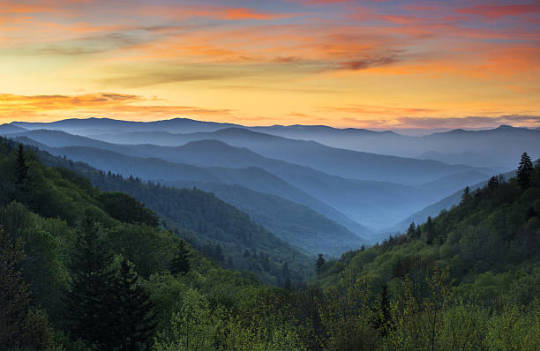
Many of these stories, and folk practices originate from the Native Americans, specifically Cherokee, and are mixed in with the superstitions brought over from the old world specifically English, Irish, and Scottish. As well as the practices brought over from the African Continent During the Slave Trade.
The Native population assisted the early settlers in Appalachia with ways to survive the area, grow food, and even forage for one of Appalachia's staple foods, RAMPS!!!
Let's delve into the history of Appalachian Folklore and the origins of everyone's favorite stories.
Cryptids and Myths
This is one of the most famous aspects of Appalachian folklore and one which outsiders know the most about, Appalachian Myths and their Cryptids that follow. Below I will go over a few of the more famous ones, which many have learned about, either second-hand or through living in the area.
The Moon-Eyed People
There was a group of humanoids called the Moon-Eyed People, who were short, bearded, and had pale skin with large, bright eyes. They were completely nocturnal due to their eyes being extremely sensitive to light. Although not mythical, they were considered a separate race of people by some. The tribes viewed them as a threat and forced them out of their caves on a full moon night. They were said to have scattered to other parts of Appalachia as the moon’s light was too bright for their eyes. There are some early structures that are believed to be related to the Moon-Eyed People, dating back to 400 BCE. Some theories suggest that they were early European settlers who arrived much before Columbus discovered the Americas. Other theories suggest they were people who had Albanism.

Image of The Moon Eyed People Statues in Murphy, North Carolina
Spearfinger
Spearfinger is a Cherokee legend of a shapeshifting, stone-skinned witch with a long knife in place of one of her fingers. She often was described as an old woman, which she would take the form of to convince Cherokee children that she was their grandmother. She would sit with them, brush their hair until they fell asleep, and then kill them with her “spear finger.” She had a love of human livers which she would extract from the bodies of those she killed. It was said she left no visible scars on her victims. She carried her own heart in her hand to protect it, as it was her one weakness. As the legend goes, she was captured and defeated with the help of several birds that carried the information to defeat her. Though she has been destroyed, sometimes you can hear her cackles and songs throughout the mountains.

Image of SpearFinger Cherokee Legend
W*ndigo
This spirit is said to go to where its name is called allowed so since most of us already know the name I won't be writing it out in completion. So out of respect for some of our native readers, it will remain censored
The W*ndigo is a creature, sometimes referred to as an evil spirit, that is said to be 15 feet tall with a body that is thin, with skin pulled so tight that its bones are visible. Many native legends view it as a spirit of greed, gluttony, and insatiable hunger. It is a flesh-eating beast that is considered most active during the colder months, and its presence is easily felt and smelt. It has been described as having a distinct smell of rot and decay due to its skin being ripped and unclean. It produces an overwhelming urge of greed and insatiable want. Most notably, it is not one to chase or seek after its prey; instead, it uses its terrifying mimicry skill. It often mimics human voices, screams, loved ones, or anything that might entice its victim to come to it. In some cases, it is believed the W*ndigo is a spirit that can possess other humans and fill them with greed and selfishness, turning them into W*ndigos as well.
Appalachian Folk Practices
Many of the common Appalachian folk practices stem from things the Native Americans and Enslaved Africans taught them mixed in with cultural practices from Europe. Here I will go over some of the most common practices done by the Appalachian people
Water Dowsing
water dowsing is a practice that has been done for hundreds of years in many different cultures. This practice was brought over by the European settlers and was how many people of the time found where to dig for their water. The practice itself is simple in nature, you take a forked branch from a tree and hold it in both hands and walk around once the stick points down due to the electromagnetic current that's where you dig your well.
this isn't exactly the best way to find water but many people still do it to this day.
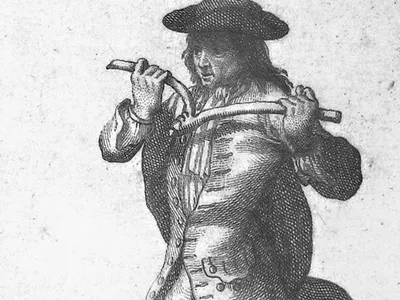
Image of Someone Using A Dowsing Rod
Bottle Trees
This practice originated in the Congo area of Africa, in the 9th century A.D. brought to America by the slave trade, in the 17th century. Bottle Trees, were popular in the American South and up into Appalachia, the spirits are said to be attracted to the blue color of the bottles, and captured at night, then when the sun rises it destroys the evil spirits.
This is still practiced in the modern era by many Appalachian Folk Practitioners
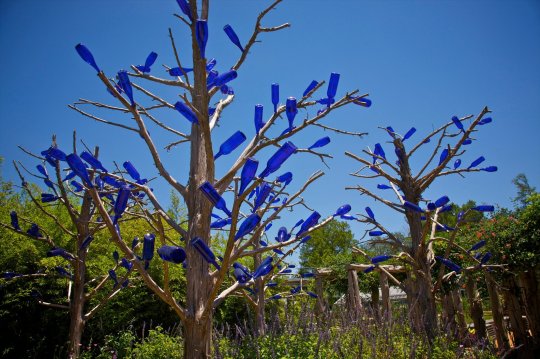
Image Of Bottle Trees
SIN EATING
This practice originates from the Ancient Greeks and Egyptians, it branched to many different cultures and has been practiced since antiquity by many Christian and Catholic tribes. And later making its way to America via immigration. The process was once a profession in Appalachia, in which food was placed on or near the deceased and a person dressed in all black would eat the food absolving the dead of all of their earthly sins. This essentially cemented their ability to get into heaven. The practice while sparsely done any more as a profession, it can still be found in many peoples funeral services to this day around the world.
Many cultures still do this practice and the sin eaters usually choose to hide their identity as the practice is seen as taboo to this day.
Popular Herbs To Forage In Appalachia Folk Practices
Wild Leeks or RAMPS!!!
Allium tricoccum, are a species of wild onion native to North America. They are a delicacy, and hold a special place in the hearts of many Appalachians. Native Americans such as the Cherokee ate the plant and used it medicinally for a variety of purposes including as a spring tonic. Early European settlers learned how to Forage from the Indigenous People and continued to eat and use ramps medicinally. Ramps provide many nutrients and minerals and historically have been used to nourish people after harsh winters.

*RAMPS poisoness Look Alike
False hellebore (Veratrum) is a highly poisonous plant that can be mistaken for a prized wild edible, the wild leek, or ramp (Allium tricoccum)
Chicken of the Woods
Laetiporus sulphureus. Chicken of the woods is a sulphur-yellow bracket fungus of trees in woods, parks and gardens. They are delicious and are loved by many foragers, Native Americans, and Appalachians alike. The Native Americans taught the early settlers that these were edible and have been a favorite ever since. Chicken of the Woods is most likely to be found from August through October, but it can be found as early as May and up to December depending on where you live.

*These have a poisoness look alike, Jack O Lantern mushrooms
The Jack-o'-lantern mushroom should not be eaten because it is poisonous to humans. It contains toxic chemicals that can cause severe stomach upset accompanied by vomiting, diarrhea and headache
PawPaws
The Pawpaw Asimina triloba, is well loved by Appalachian locals as a native fruit with a tropical taste. Pawpaw fruit is the largest tree fruit native to the United States, and its custard-like flesh has been said to taste like a combination of banana, pineapple, and Mango. The pawpaw has been used by Native Americans for centuries for both its fruit and its medicinal properties. Many tribes, including the Osage and Sioux, ate the fruit; the Iroquois used the mashed fruit to make small dried cakes to reconstitute later for cooking. PawPaw season is late summer, look for the smell of rotting fruit, eat the ones that are squishy to the touch.

*They resemble mangos on the trees, many options to eat the ones that are on the floor already as they usually have ripened, but you can also ripen them at home.
Appalachia has a rich and beautiful history filled with magic and delicious food. But the only real way to learn about Appalachia is to visit it. Go and speak with locals, learn about the history, their delicious foods, and powerful Grandma magic, and you too will fall in love with Appalachia.
Thank you for sitting down and having Tea with me on the Other side of the Great Divide
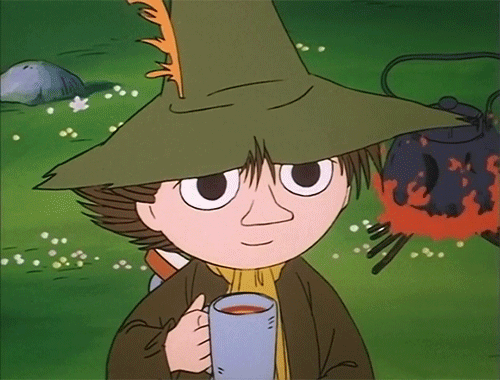
#witchcraft#ritual#occultism#esoteric#occult#spirit work#magi#magus#magick#witch#witchy vibes#witches#witch tips#appalachian folk magic#appalachia#appalachain mountains#american folklore#folklore#folklorist#appalachian culture#foraging#WanderingSorcerer
601 notes
·
View notes
Text

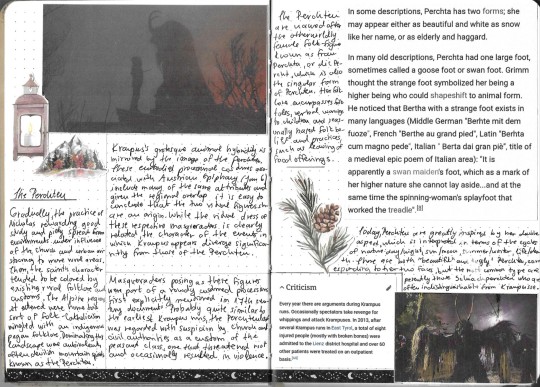
As we're moving away from the dark seasons, in the period where spring is only just preparing for its first steps, I created this journal entry on the Krampus and the Perchten, famous Alpine winter spirits.
It's a compilation of text excerpts from scientific articles and printed photos/stickers, arranged in a way that reminds me of zines. I've always wanted to create zines on folklore, cryptozoology, mysteries and similar topics so maybe it does happen someday 😁.
#folklorist#folkhorror#folklore#bujo#bujo spread#commonplace journal#commonplace book#commonplacing#dark#commonplace#journaling#journal#bullet journal#krampus#perchten#winter#bujo community
226 notes
·
View notes
Photo



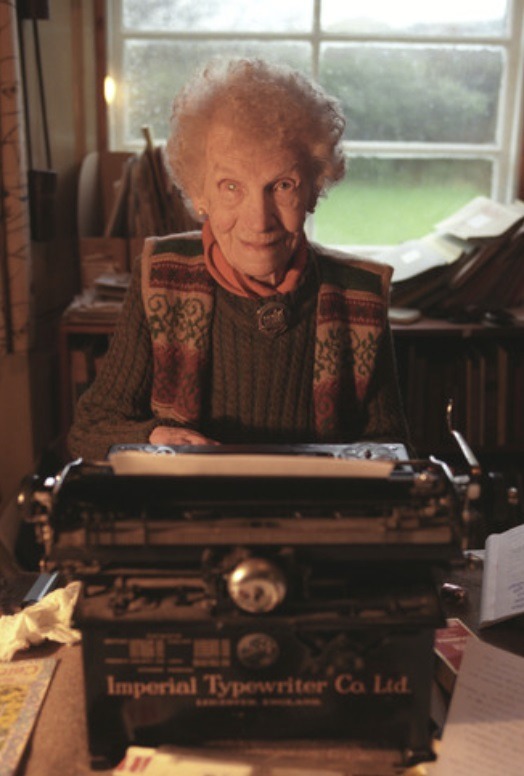
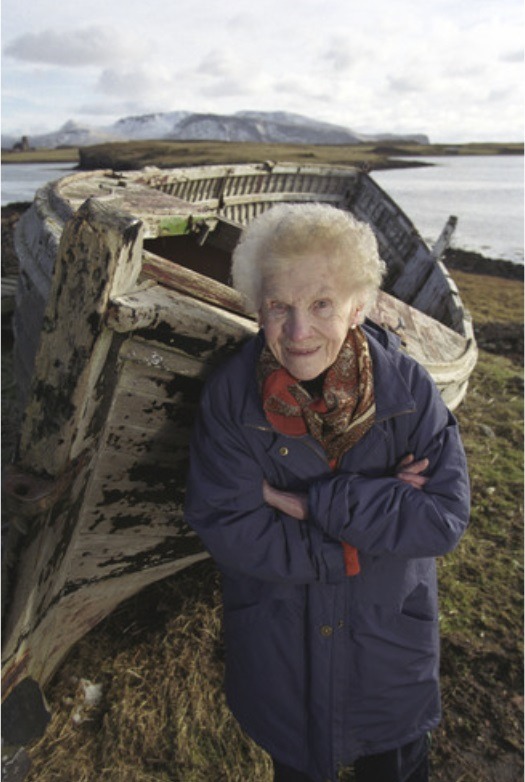

December 11th 2004 saw death of Margaret Fay Shaw at the age of 101
Margaret was the third generation descendent of John Shaw, who had emigrated from Scotland to Philadelphia in 1782. Her parents died while she was still young, and Margaret was brought up by relatives. In 1921 she spent a year at St Bride’s School in Helensburgh. While there, she heard Marjory Kennedy-Fraser singing her “Songs of the Hebrides” at a school concert and decided she wanted to find out more about the original Gaelic versions of the songs she had heard. In 1924, between her training to concert standard as a pianist, she undertook a cycle tour with her sister that included large parts of North West Scotland. In 1926 she cycled from Castlebay on Barra along the length of the Western Isles to Port Nis in Lewis.
In 1929, having had to give up the piano because of rheumatism, she moved to live with two sisters, Mairi and Peigi MacRae, in their traditional croft on South Uist near Lochboisdale. She remained there until 1935, learning Gaelic and recording the songs and folklore of the island. The result, published in 1955, was Folksongs and Folklore of South Uist. Such was her contribution to the recording of Gaelic culture that she was later awarded honorary degrees by the Universities of Aberdeen and Edinburgh, as well as from St Francis Xavier University in Nova Scotia, and the National University of Ireland.
In 1935 Margaret Fay Shaw married John Lorne Campbell, who shared her love of Gaelic culture and tradition. In 1938 they purchased the island of Canna and established a home there, from which they continued to gather traditional songs and material, later extending their interest to the Gaelic culture of Nova Scotia. In 1981, Margaret and John gave Canna to the National Trust for Scotland, along with their extensive archives on Gaelic culture. John Lorne Campbell died in 1996, and after his death, Margaret continued to live on Canna until she died on this day in 2004
Margaret Fay Shaw Campbell created a photographic archive of over 1,000 prints and 5,000 negatives, spanning much of the 20th century, that the National Trust of Scotland have digitalised. Among her pictures are photographs of the Aran Islands, Mingulay, and the people of St Kilda at the time of the island’s evacuation.
Have a listen and watch the video on the link at the bottom of the page, it’s a beautiful song called Secrets’ written by singer songwriter Yvonne Lyon of Greenock. I love the song and the pics that feature, where Margarets’ love of cats shines through.
Margaret said that Uist was the place ‘where she was loved the best’ I think the people of the Hebrides took to her rather well too!
She is buried in Hallan cemetery in South Uist, beside, it was by her own request that she was buried beside Peggie and Mairi Andra, South MacRae of Lochboisdale, with whom she spent her Uist years in the 30s. She never forgot their great kindness to her. Nor did she forget her indebtedness to them.
Her headstone reads;
Dr. Margaret Fay Shaw
Born 9-11-1903 - Died 11-12-2004
Beloved Wife of John L. Campbell
Of Inverneill.
Fear Chanaidh
"Thainig Sibh A-Nall Thar Chuantan Is Chuir Sibh Urram Air Ar Dualchas Chruinnich Sibh An Dileab Luachmhor A Bhios Buan Acainn Mar Storas"
The inscription, when translated from Gaelic, reads:
"You came across the ocean
And you gave respect to our history
You gathered our precious legacy
Riches that will endure."
https://www.youtube.com/watch?v=MQiD1jXFhK4
20 notes
·
View notes
Text
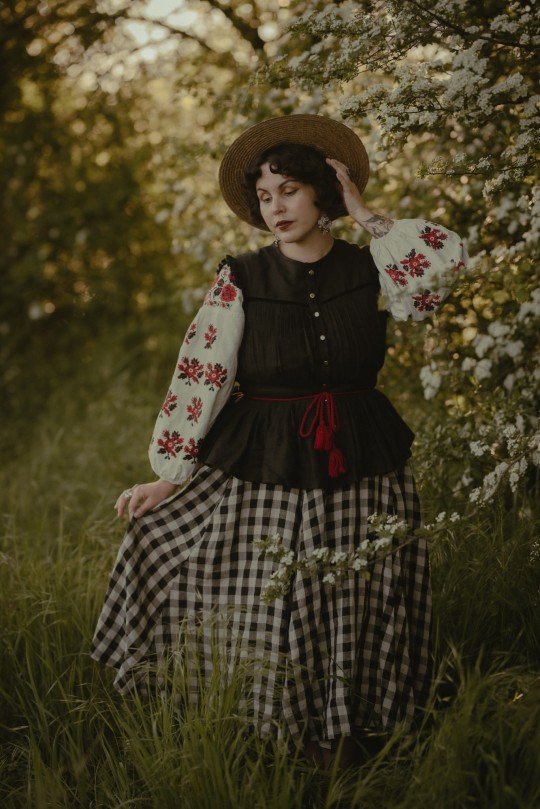
Another way to style a traditional ukrainian vyshyvanka blouse and vest, without wearing a full folkloric costume. I truly enjoy including real traditional garments in my everyday style, it feels so special. It's like I'm carrying traditions from humans who were there before me, so I never truly feel alone. That's why I truly feel happy with my folkcore goth aesthetic 🖤
#dark cottagecore#cottagecore aesthetic#folkcore#dark aesthetic#folk goth#historybounding#witchy aesthetic#slavic folklore#ukrainian folklore#ukrainian culture#ukrainian clothes#vyshyvanka#vintage clothing#vintage aesthetic#vintage postcard#folklorist
44 notes
·
View notes
Text
#OTD in 1883 – Pádraig Ó Siochfhradha, writer under the pseudonym ‘An Seabhac’ and promoter of the Irish language is born in Dingle, Co Kerry.
Pádraig Ó Siochfhradha was born in the Gaeltacht near Dingle in Co Kerry in 1883. Pádraig Ó Siochfhradha went on to become an organiser for Conradh na Gaeilge, cycling all over the countryside to set up branches and promote the Irish language. As a writer, he took the pen-name ‘An Seabhac’, the Hawk, writing books including ’An Baile Seo ‘Gainne’ (1913) and ‘Jimín Mháire Thaidhg’ (1921), both of…
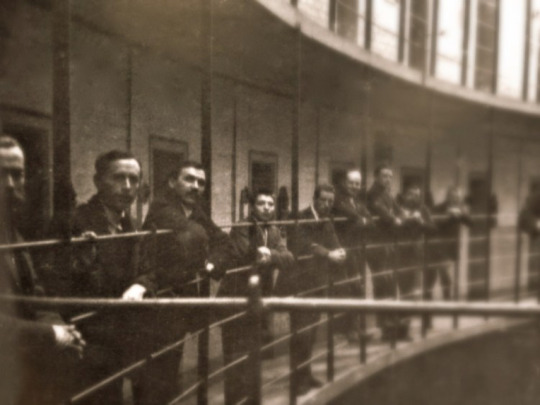
View On WordPress
#Activist#An Seabhac#Author#Éamon De Valera#Bere Island#Co. Cork#Co. Dublin#Co. Kerry#Conradh na Gaeilge#Dingle#Donnybrook#Durham prison#England#folklorist#Gaelic League#Gaeltacht#Ireland#Irish Civil War#Irish History#Irish War of Independence#Pádraig Ó Siochfhradha#Politician#Seanad#Senator#Storyteller#Teacher#Writer
9 notes
·
View notes